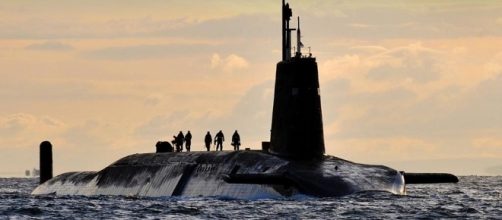In December 1941, in response to Japanese attacks, Britain sent two battleships half way round the world to bolster its military might in the region. On arrival Japanese aircraft promptly sunk the two huge ships. Air power had become the dominant force on the oceans, but although the shift in technology had happened long before the attack, it took the loss of the two ships to impress the new reality on decision makers. Britain is now at risk of making a far more significant and far more costly blunder of a similar nature.
Trident course set
In the recent General Election campaign one issue that had little mention amongst the bruhaha about the NHS, dementia taxes, Brexit and so forth was the renewal of Trident – Britain’s submarine-based nuclear deterrent.
Other than the Conservatives seeking to bash Jeremy Corbyn for not wanting it, it barely made a mention, despite it being set to cost between £31 billion and £100 billion over its lifetime and to provide the deterrent until 2060.
Maybe this was because Parliament had already voted to renew it last year. Both Conservatives and Labour have committed to replacing the aging Trident system with a new 'like-for-like' replacement. This is a mistake. To understand why, one must first grasp the rationale behind the submarine-based Trident system. It relies on the strategic theory of a ‘continuous at sea deterrent’ (CASD) – you always have at least one submarine at sea carrying enough nuclear firepower to launch a devastating retaliation against an attack.
In order for your nuclear deterrent to be effective, you have to be confident that potential enemies cannot destroy or neutralise it in a surprise attack. As the oceans are vast, submarines are almost impossible to detect. This means the strategic thinking behind CASD is solid. Or at least, it was until recently.
Trident strategy undermined by new technology
There are three technological developments that between them look set to fundamentally alter the nature of submarine warfare – satellites that could use atomic clocks to detect 'ripples' in gravity beneath the waves, the proliferation of underwater drones and the combination of low frequency sonar with big data. The implications for submarines of these technologies has been explored by the USA’s Centre for Strategic and Budgetary Assessments.
The key points are that China already has a satellite in orbit with the future potential to track nuclear submarines, that underwater drones will become very widespread and that low frequency sonar, capable of covering great distances, is set to overcome its inherent lack of accuracy by combining with the data crunching capability of modern computers. At this stage these are all nascent technologies, but they are only set to improve over time. Their combined impact will at some point rob submarines of their ability to hide. The Trident Replacement is not due to launch until 2028 and is supposed to last until 2060. Time is against it. Or in other words, the strategic basis for CASD is likely to collapse, if not before the new system launches, then during its lifetime.
Britain will have spent a lot of money on a nuclear deterrent that is vulnerable to attack.
The best case scenario for a Trident-type system is that it will become a lot more complicated and expensive to be viable, needing a comprehensive screen of un-manned vessels to shield it from potential attackers. These costs are hard to predict, but would be very significant and would not entirely make up for the loss of its current stealthy status.
Trident: alternative approaches
So if you think Britain should maintain a nuclear deterrent, a like-for-like replacement of the Trident system will be a costly mistake. The submarines are very expensive and there are cheaper delivery systems that we could use, such as aircraft-based ones.
This point was recognised in Britain's own 'Trident Alternative Review' of 2013. Alternative systems would not have the current secure nature of Trident, but then neither will Trident’s replacement anyway. Unfortunately the time frame for developing an alternative approach is short and the political will to change direction largely absent. Expect to see articles in the future asking why Britain wasted so much money on a lost cause.


